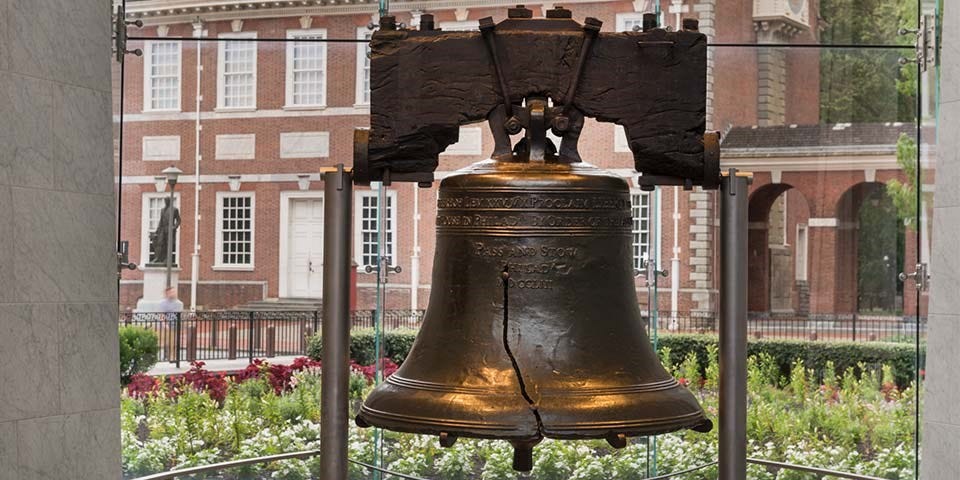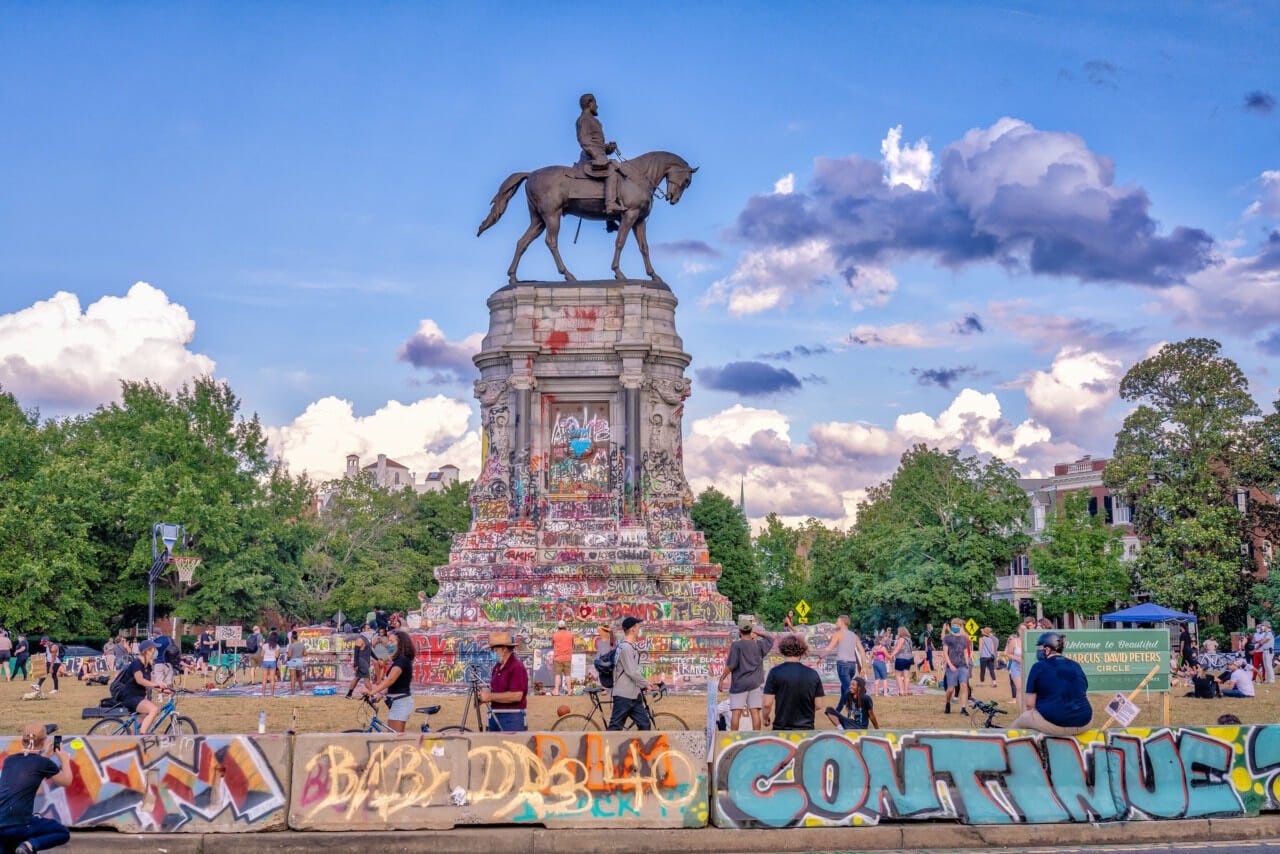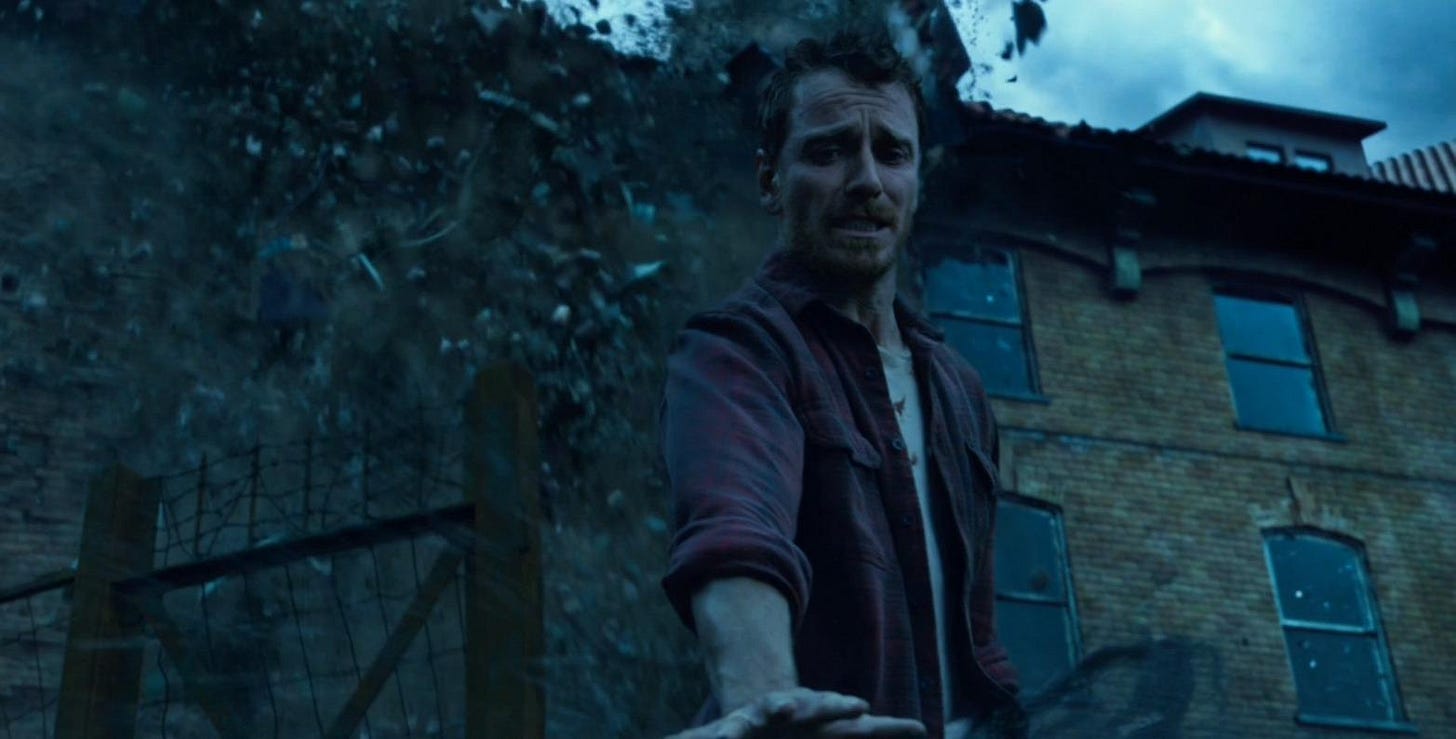A Reflection on A Burning Relic
When MLK said he integrated us into a burning house, he was probably thinking about a plantation home...
Relics matter—
but mostly because we’ve been told they do. Society gives them meaning, reinterprets them, and builds stories around them that shape how we see the past—and ourselves.
Take the Liberty Bell in Philadelphia, for example. It’s often held up as a symbol of American freedom, especially because of the inscription that’s taken from Leviticus 25:10: “Proclaim liberty throughout all the land unto all the inhabitants thereof.”
But the truth is, that message wasn’t originally about liberty for all inhabitants or even all inhabitants in the same way. Like a lot of American relics—both literal and symbolic—it meant something much more exclusive at the time. It was less like freedom and more like privilege. The “freedom” that it spoke of was mostly referring to two early American ideals: freedom of religion and self-government, which were key parts of Pennsylvania’s constitution, written by William Penn in 1701.
It almost goes without saying - but it always needs to be said: Penn was a slave owner. So when he talked about these “freedoms”, he wasn’t thinking about Black people, Indigenous people, or most immigrants. Liberty and freedom, as depicted in early America and displayed in its earliest writings, were defined by white supremacy.
Over time, though, the bell took on new meanings. It became a symbol of freedom during the American Revolution, used during protests and to announce important events. Nearly a century after the bell’s commissioning, anti-slavery abolitionists came along and referred to it as the Liberty Bell. From there, it became a symbol of American freedom during the Women’s Suffrage movement, the Civil Rights Movement, and during World War II. Its story, like many American symbols, has evolved—along with the nation’s understanding of who gets to be included in its message.
There aren’t many examples of relics that have evolved like the Liberty Bell has. This former symbol of liberty in a young white supremacist nation was adapted to becoming a symbol of liberty for all. But while some relics should experience this transformation - many shouldn't.
Confederate monuments, flags, and memorials are one example of this and I’ve argued before that all of these things should be done away with, not because they need to be forgotten, but because they’ve been sanitized and sacralized. Twenty foot tall stone-laden Southern generals are not historical markers as much as they are symbols of pride for a short-lived racist-fueled regime that ended long ago. Confederate flags hoisted beside rural interstates and affixed to bumpers aren’t about teaching history as much as they are expressions of reverence for a fallen empire built on lies of inequality. We could know as much as we need to know about them in a book or a museum. They don’t deserve to stand in our streets or wave from flag poles because history already decided their unworthiness.
But plantations…Plantations - unlike bells, flags, statues and memorials - are not merely symbolic or representations of ideas or people, they’re embodied history. They’re actual. If they could speak they would tell the stories of oppression, brutality, denigration, and destruction that took place on their soil. They are sites of historical trauma, slavery, and racial violence.
Yes, plantations can definitely be reimagined—and they often are. People use them for weddings, wine tastings, corporate retreats, even casual coffee chats. But this kind of reimagining is different from the Confederate monuments and memorabilia that came later. Those were put up to be remembered, even celebrated.
But plantations? Their transformation relies more on forgetting—convenient forgetting. Not exactly erasure, because that would mean admitting what these places really were. Instead, plantations are sort of hidden in plain sight. They're not glorified, but they're not fully reckoned with either. It's more like they're concealed—softened.
It’s like taking a tiger that once killed for sport and turning it into a docile circus act. Tamed, cleaned up, and given a friendly name. These places went from being sites of mass suffering—basically concentration camps and places where people were bred like livestock—to becoming expressions of a dreamy Southern lifestyle, where everyone is depicted as happy, “knowing their place”, and getting along.
Some of them are even museums now. But instead of hearing the raw, brutal truth, visitors are often met with careful language from tour guides who seem more focused on avoiding discomfort than telling the full story. The violence gets smoothed over, replaced by a version that’s easier to digest—for those who’d rather not confront what really happened there.
Yes, plantations can be rehabilitated. The buildings can be updated. The lawns can be manicured. The chains can be removed, but Abel’s blood still cries out from the ground.
Some have become museums where reinterpretation and rehabilitation are focused solely on telling the truth about slavery and the stories of enslavers and those they enslaved and this should be celebrated, especially when the profits go to Black communities.
Much like the misplaced reverence that their Confederate contemporaries receive, plantations deserve a kind of reverence too; but a reverence properly deserved. These grounds, if they are to remain standing (because they all deserve to be burned to the ground) - These grounds deserve to be regarded with sacredness, humility, and solemnity - not for the owners of the land, but for those once under the status of “owned”; those who were born, who bled, and who died on these properties - without their names and many without their families or their freedom. These grounds, if they’re to remain standing, deserve all the caution and sensitivity required to exalt the memory of those impacted by the oppression that occurred there.
People often compare plantations to Auschwitz in regard to how they should be approached by tourists and outsiders - like slavery should be regarded as an event equivalent or worse than the Holocaust (it was way worse, not that it’s a competition). Still, maybe because Auschwitz is so far away, or because slavery feels like “old history” to some, that comparison just doesn’t always hit the way it should. And so the plantation weddings keep happening, and the truth keeps getting neatly tucked away.
But here’s the thing—maybe the better comparison isn’t Auschwitz. Maybe it’s a graveyard. Because when’s the last time you saw someone throw a wedding in a cemetery? Or host a business conference in one? Plantations - if they’re to remain standing - should be approached with this seriousness and consideration. They’re some of the only places we can know for certain our ancestors lived and moved, and they’re the places where many of them rest. There should be a sacredness and a seriousness involved when frequenting these places.
…But lest you think Black people should feel any deep or significant connection to plantations or have some interest in seeing them preserved…
In X-Men: Apocalypse, the villain, Apocalypse, finds Erik (aka Magneto), who’s struggling with his powers. To empower him, Apocalypse takes him back to Auschwitz—the same place Erik was imprisoned as a kid and where his parents were killed. Standing at the gates, Apocalypse tells him to tap into the metal buried deep in the ground. As Erik starts remembering everything he went through, he channels all that emotion and power, moves the earth, and completely destroys the camp.
Look, I can’t speak for all foundational Black Americans, but I’m willing to guess that if you gave us superpowers and placed us on the porches of these plantation homes, I think most of us would do exactly what Magneto did. Which is exactly why I think many of us responded in the celebratory way that we did last week when Nottoway Plantation was burned to the ground, and when a tree fell on the Fort Branch Confederate Museum, or when flames took down a Kalorama mansion in the historically segregated Washington DC neighborhood. For so long the hunter’s been telling his version of the story when it comes to this distorted history, and the lion’s side’s been overlooked, and so while we’d rather see these places tell the truth about their history while they’re standing, we don’t feel no type of way when they justsohappen to cease from existing. As a matter of fact many of us were delighted at the sight of the largest plantation house in the South burning down. I haven’t even looked up the cause of the fire. If it was the oven or arson it’s all the same to me. Maybe it’s exactly the rehabilitation this relic needed.





